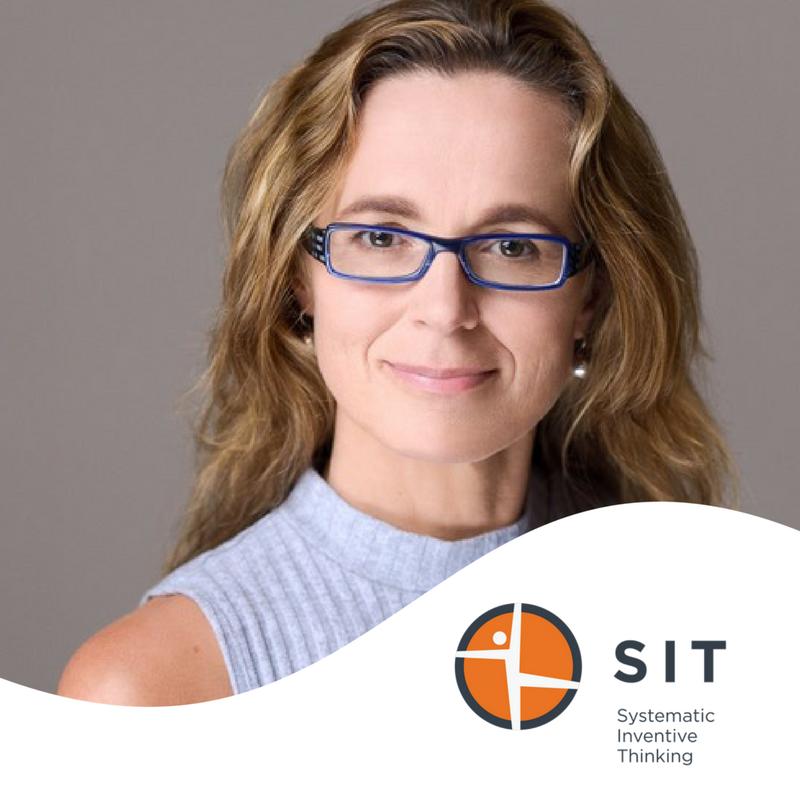This is a guest post by Rachel Audigé, as previously published here.
We all have ways of solving problems but we sometimes get stuck on trying to identify THE problem or tackling the root cause that may be unsolvable.
Inventive thinking should bring huge degrees of freedom and more counter-intuitive ideas. This is an approach to solving problems that will radically change the way you see problems.
Testing the traction
We all try to avoid the bias of the ‘Law of the Instrument’ — whereby we walk around with our hammer and see everything as a nail — but when you keep seeing a method really help people think differently, it’s hard not to want to share the hammer around…
I gave a presentation to some med. students last month at AMSA’s NLDS, in Canberra, and presented an alternative way of solving problems. Many came up to me afterwards and asked why they had never been exposed to it before. I told them it had been around for 22 years, was academically and commercially proven but was relatively new to Australia. I wasn’t there for the end of the conference but I’m told that a large proportion apparently used the method to rethink the problems they were tackling and came up with some really interesting ideas. The same thing happens each year at UTS…and within companies. Given the traction each time I share it, I thought I’d jot down the essence of this:
We are all solving problems all the time so you’d think we’d be pretty good at it. Indeed, many of us are. But we all get stuck and need to continue to beef up our toolbox. For me, inventive thinking should bring extra tools and more degrees of freedom to our thinking.
The Problem in the Solution
The alternative method I taught comes from Systematic Inventive Thinking and the fabulous Israeli brains that are neither left nor right but a Goldilocks spot in between.
With this method, rather than leaping to a solution or diving to the root cause you explore the ‘problem world’; you approach problems in such a way that the problem itself may become the basis of the solution or, at the very least, may be creatively leveraged to alleviate the negative effects of the problem at some point in the chain. This is the Gold in that Goldilocks.
We know from experience that inventive solutions that harness the problem in the solution are perceived as particularly elegant. Indeed, even if we don’t know this, we all use this principle all the time: We starve fire by lighting one. Vaccinations give us small doses of the disease to build up our immune system against it. We remove red wine spilt on the carpet by dousing it with white wine…
In very simple terms, this approach involves laying out the ‘problem’ in a sort of causality chain. An initial exploration of the chain may involve ‘countering’ any problem statement in the chain, making it positive (e.g. ‘the barrier will not fall down’) and identifying available resources to make that true — SIT only works with resources you have — we call this ‘inside-the-box thinking’. This can bring some cool ideas but the more unusual thinking experiment is to actually seek to break the relationship between a cause and its effect anywhere in the chain:
Don’t just make it less worse
We love to use the example of a police barrier:
A police barrier needs to keep demonstrators or crowds at bay. The problem the Israeli police force had is the same worldwide: The barriers were there for safety but they were not safe. As crowds pushed against them, they had a tendency to collapse — potentially injuring the crowd or bystanders or horses or the police themselves. The more people pushing, the more likely this was to happen.
Intuitively, when faced with this sort of problem, we try to make things “less bad”; we seek to decrease crowd numbers or reinforce the strength of the barrier.
In workshops, participants playfully suggest adding more police or eliminating the crowds through a variety of vicious means (tear gas etc!) but, when we apply SIT, we are not interested in tear gas solutions — rather, we seek to either sever the relationship between a cause and its effect or — better still — inverse it!
To do this, we introduce paradox into the causality chain and write up the outcome we are after in an intentionally contradictory way: “although people lean up against the barrier, it will not collapse” OR (cooler still) “ the more people push up against the barrier the less likely it is to fall.”
This sounds strange and counter-intuitive but when you force yourself to ‘solve’ this riddle, you push your thinking in directions that are not only less obvious but you are embracing the problem in your thinking. Just think about the sorts of problems we are faced with today where the underlying problem may not be ‘solvable’ but we need to radically address the consequences:
‘Children are walking onto roads with their eyes on smartphones
‘Drivers are using their phones while driving’
‘Trump is… oops! sorry.

We often need to come up with solutions that “embrace” the problem. For the barrier, the creative solution was this:
The more the crowd pushes up against this, the safer it is.
We have more examples in digital, heavy industry, engineering, medicine, advertising where we have found solutions that solve the riddle and whereby the ‘worse’ the problem, the better the solution.
This is powerful, counter-intuitive, feasible and intrinsically optimistic. We need this combination to be effective and disruptive innovators.
I will present this in detail at Innov8rs Sydney, in September 2018.
 Rachel Audigé runs an innovation and marketing practice, based in Melbourne. She is an ex-Intrapreneur & passionate speaker and facilitator who delights in getting smart people in a room and giving them an alternate search engine for creative ideas with business impact.
Rachel Audigé runs an innovation and marketing practice, based in Melbourne. She is an ex-Intrapreneur & passionate speaker and facilitator who delights in getting smart people in a room and giving them an alternate search engine for creative ideas with business impact.

